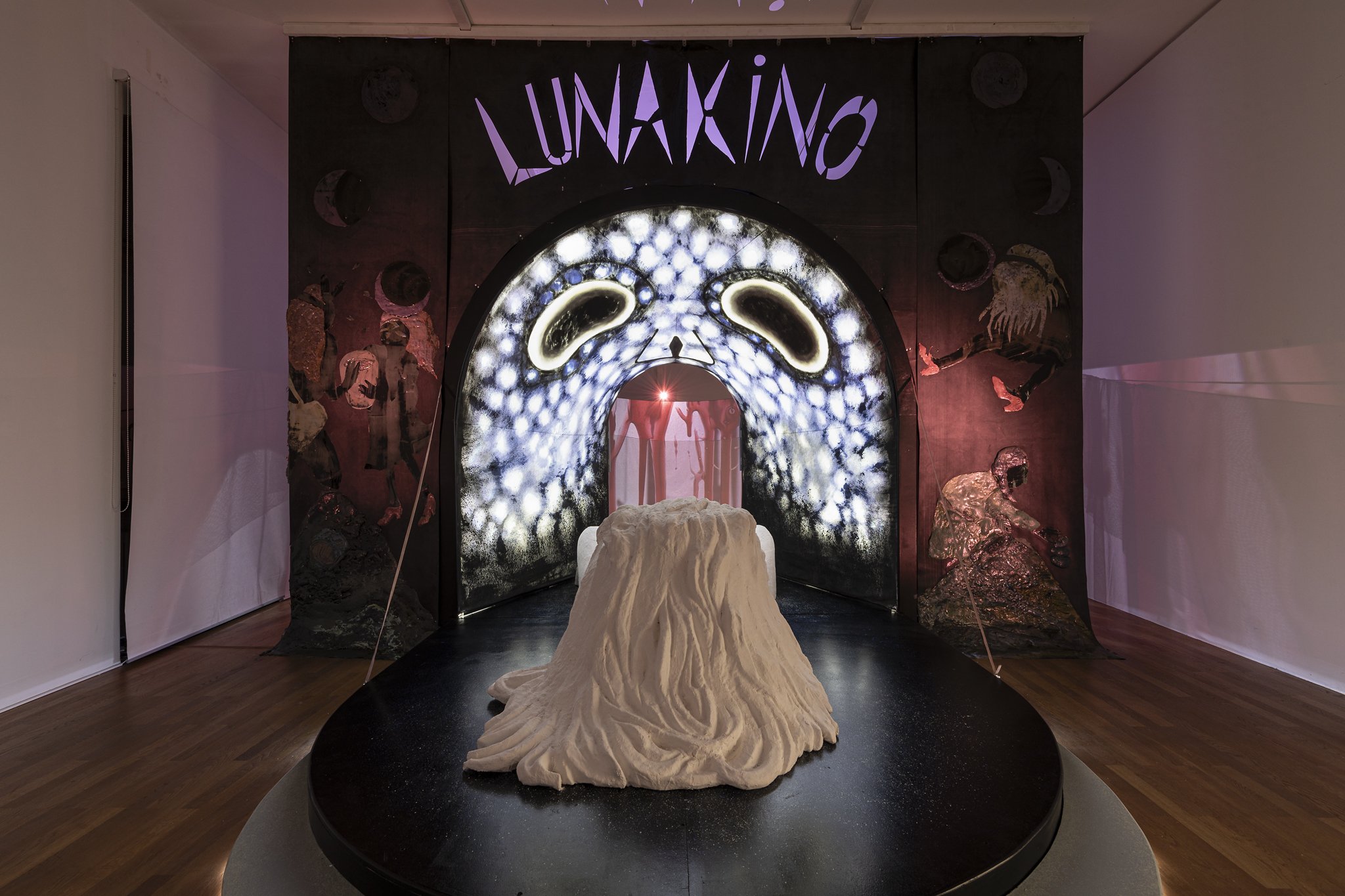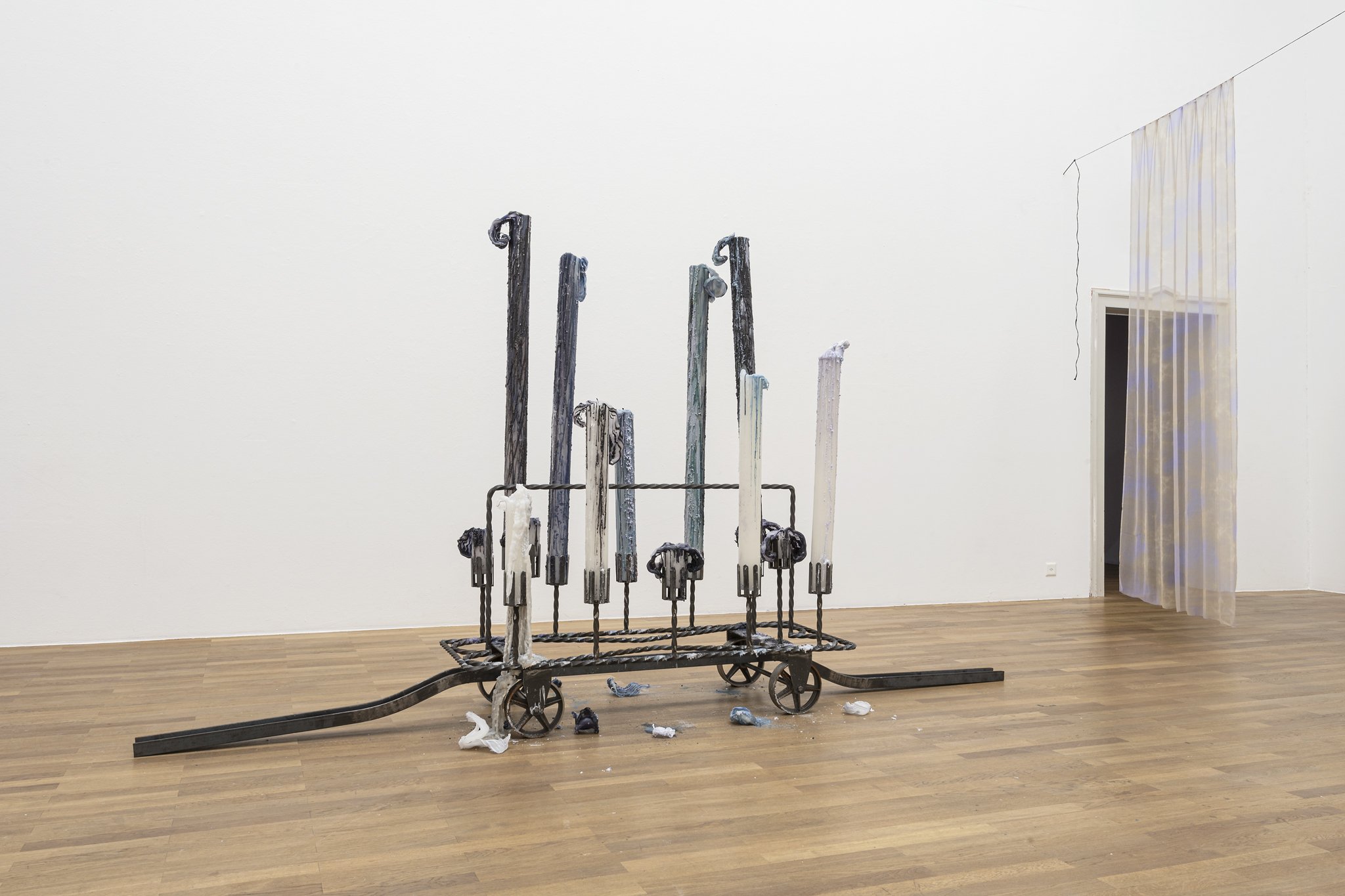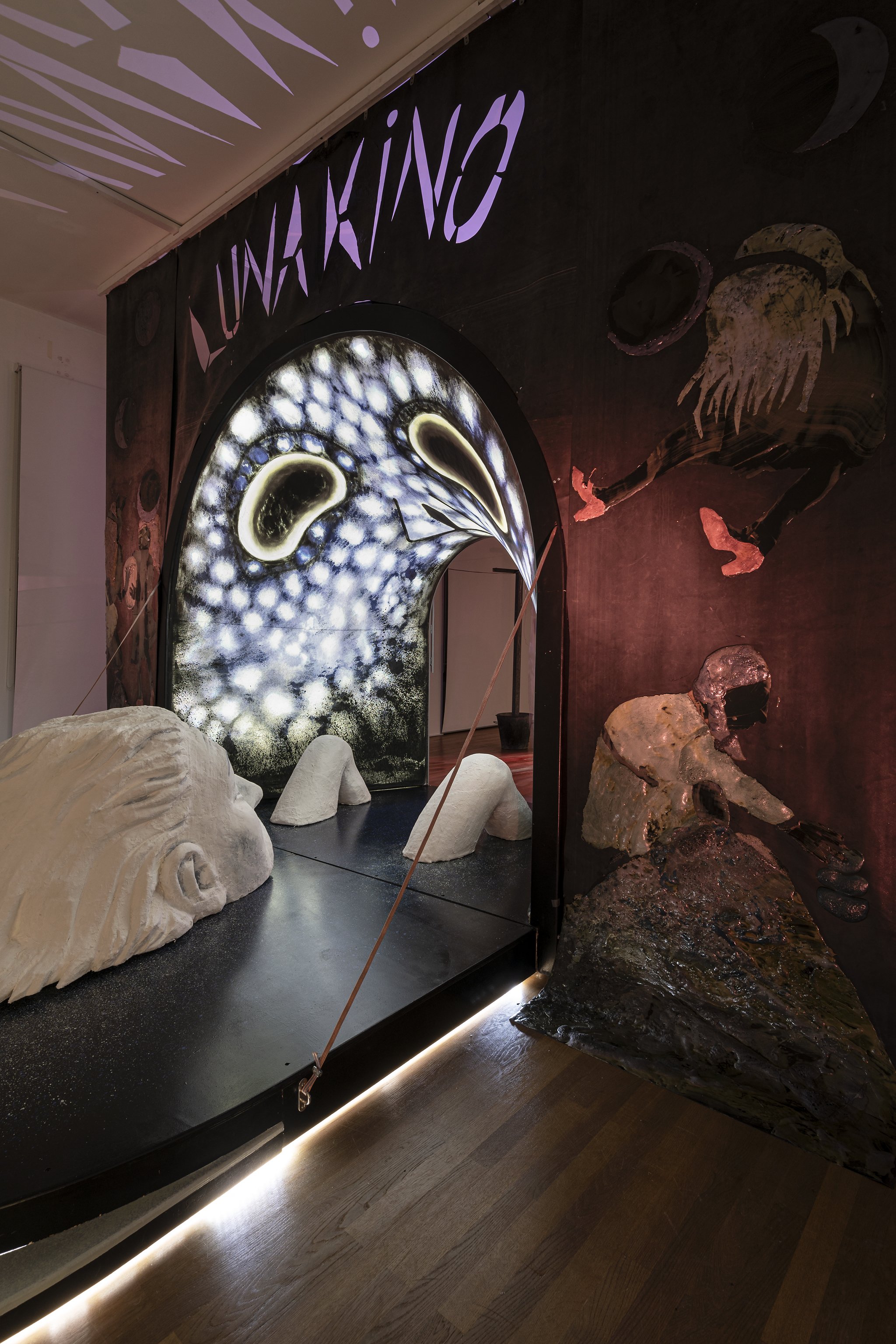Pauline Curnier Jardin
8 October – 26 November 2023
The exhibition by Pauline Curnier Jardin (b.1980 in Marseille, lives and works in Rome) consists of three parts: The main hall features Durata di cera (Was man aus Liebe tut) / La notte del 17 novembre and six ceramic reliefs, titled Was man aus Liebe tut, both produced for her 2022 exhibition at Fondazione Memmo in Rome. The small hall is exclusively dedicated to Luna Kino (2022), first exhibited at Galerie ChertLüdde, Berlin.
The central structure of Durata di cera (Was man aus Liebe tut) / La notte del 17 novembre is reminiscent of a freight car chassis used in mining, but instead of being used as a container, it holds giant candles in place. The size of the installation and the lit candles create a sublime and solemn atmosphere, reminiscent of some form of religious or occult ceremony or intimate gathering.
Although not on display in the same room, both pieces Was man aus Liebe tut and Luna Kino are the result of the artist's research into the Luna Lichtspiegel, a Berlin cinema located across from Galerie ChertLüdde. The cinema, which opened in 1914, survived two world wars, making it an unlikely symbol of resistance and hope. Unlike most cinemas, Luna Kino was designed as a semi-open display where visitors can move relatively freely around and through its entrance, audience area, and screening hall.
The entrance of Curnier Jardin's Luna Kino is a hybrid of an artificial starry sky and a grotesque face, through which visitors enter in a hunched posture, crossing a platform that contains a half-submerged, life-sized female figure. With her mouth wide open in a scream, and lying horizontally with spread legs, the mise-en-scène inevitably evokes the moment of childbirth, immediately linking the film projected behind it – a viscous red liquid flowing down onto the camera lens in increasingly dense layers – with blood.
The three-minute film titled The Only Film is structured in four acts and accompanied by specially composed music. The film features excerpts from the 1951 song Jugend erwach! (Bau auf! Bau auf!), translating as "Youth awaken! (Build up! Build up!)", encapsulating the spirit of post-war Germany. In The Only Film these excerpts are subtly edited to transform the originally cheerful singing into a martial music beat. Throughout the film, the background noise of a film projector can be heard, towards the end accompanied by screams and muffled hacking noises.
The reference to war shapes Curnier Jardin's installation. A suspended sheet serves as the projection screen, hung on a wire between two posts anchored in buckets filled with concrete. The bucket is a symbol of the Trümmerfrau, the hundreds of women who helped clear entire cities of the rubbles of war. The Trümmerfrau became an idealized figure of post-war media heroism, replacing the obsolete image of the male warrior which had become synonymous with death and destruction, with another, albeit female, archetype of birth and reconstruction.
The references of Luna Kino are further explored in the ceramic reliefs of Was man aus Liebe tut. Here, the women carrying buckets of rubble wear high heels and nylon stockings, alluding to yet another archetype – the harlot or the prostitute. In German, Was man aus Liebe tut translates as "what you do for love", but it also has the implication that you do it for free. Being so, and in the combination with the references given here, the initially poetic title turns into an audacious male demand, highly problematic and discriminatory.



